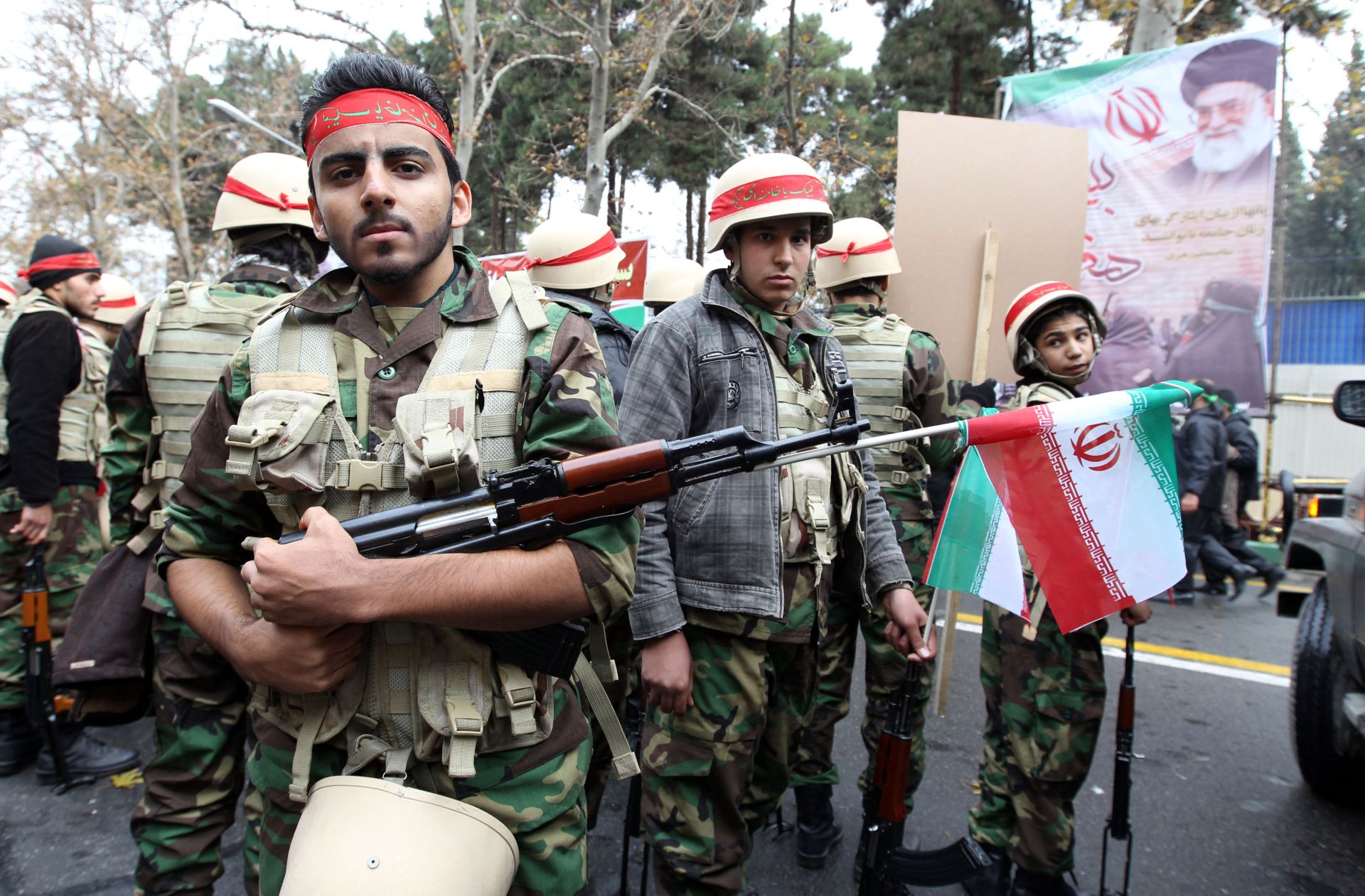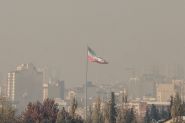- Home
- Middle East
- Basij: Iran's Paramilitary Militia Serving the Regime

Members of Iran's paramilitary Basij militia parade in front of the former US embassy in Tehran on November 25, 2011 to mark the national Basij week. ©ATTA KENARE/AFP
Formed in 1980 in the aftermath of the Islamic Revolution, the Basij is an Iranian paramilitary militia used by the regime to systematically monitor the population and maintain a constant presence in society. It was initially conceived as a popular volunteer force tasked with defending the Revolution and the nascent regime.
Rapidly integrated into the Islamic Revolutionary Guard Corps (IRGC), the Basij played a major role during the Iran-Iraq War (1980–1988). Thousands of volunteers, including very young recruits, were sent to the frontline in massive assaults known as “human waves,” resulting in heavy casualties. At the end of the conflict in 1988, Ayatollah Ali Khamenei decided not to disband the militia and entrusted it with internal security.
Sprawling Network
Today, the Basij operates as a sprawling network throughout Iran. The militia is organized into branches according to social categories (students, workers, employees, nomads, and professional guilds), and each city, neighborhood, university, school, or public institution may host a local cell. It includes different types of members: regular volunteers, active members paid during peacetime, and “special” members integrated into the IRGC for sensitive missions.
Membership in the Basij also provides material benefits, such as easier access to higher education and certain public-sector jobs, explaining why many join without active engagement.
Multiple Functions
The Basij performs multiple functions: maintaining public order, enforcing moral codes, monitoring universities and public spaces, and suppressing protests. Its members are mobilized during elections to ensure the presence of regime supporters and to intimidate the opposition. The militia also organizes educational, religious, and social activities, ranging from ideological training in schools and universities to disaster relief, further embedding it within society.
The number of Basij members is difficult to estimate. Official media sometimes cite 10 to 12 million members, including many “symbolic” members. According to a 2010 American study by the United States Institute of Peace (USIP), the active core of the militia is around 90,000 uniformed members, with 300,000 reservists and a mobilization capacity of up to 1 million people in times of crisis.
Key Repression Tool
Since the death of Mahsa Amini in 2022, the Basij has been heavily mobilized to suppress demonstrations. Thousands of volunteers, often in plain clothes, carried out arrests, beatings, and intimidation on the streets and in front of universities, playing a key role in halting gatherings and deterring protests.
During the recent “12-day” war between Israel and Iran, the Basij was mobilized to support the regime, primarily through security, logistics, and surveillance of strategic areas. Volunteer units protected sensitive installations and coordinated military logistics within Iranian territory while remaining ready to respond quickly to any direct threats.
The Basij thus remains a central instrument of the Iranian regime, capable of mobilizing thousands of members both for domestic security and to support military operations, consolidating its presence across all aspects of society.
Read more




Comments